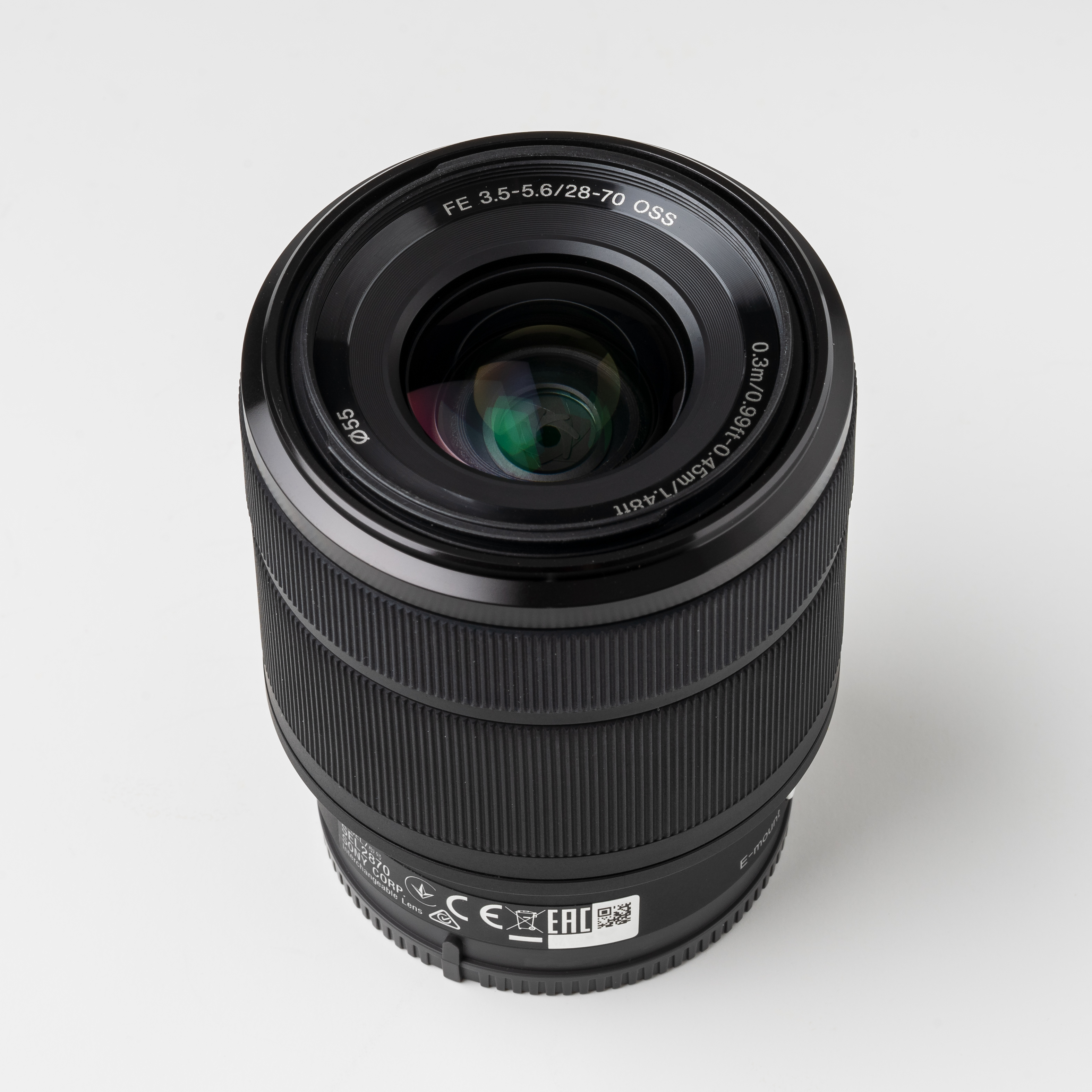|
Sony FE 28-70mm F3.5-5.6 OSS
The Sony FE 28-70mm F3.5-5.6 OSS is a full-frame (FE) variable maximum aperture standard zoom lens for Sony E-mount, announced by Sony on October 16, 2013. It was the first kit lens for Sony's full-frame E-mount (FE) system, and was released on the same day as the Sony α7 and Sony α7R. It is often bundled with various Sony E-mount full-frame mirrorless cameras, and is a less costly alternative to other standard zooms such as the Sony Carl Zeiss Vario-Tessar T* FE 24-70mm F4 ZA OSS. Though designed for Sony's full frame E-mount cameras, the lens can be used on Sony's APS-C E-mount camera bodies, with an equivalent full-frame field-of-view of 42-105mm. Construction The lens has a weather resistant plastic construction with a matte-black finish and rubber zoom and focus rings. The barrel of the lens moves outward from the main lens body as it's zoomed in from 28mm to 70mm. Optical properties The Sony FE 28-70mm F3.5-5.6 OSS shows acceptable chromatic aberration and good bokeh. C ... [...More Info...] [...Related Items...] OR: [Wikipedia] [Google] [Baidu] |
Sony E-mount
The E-mount is a lens mount designed by Sony for their NEX ("New E-mount eXperience") and ILCE series of camcorders and mirrorless cameras. The E-mount supplements Sony's α mount, allowing the company to develop more compact imaging devices while maintaining compatibility with 35mm sensors. E-mount achieves this by: * Minimising mechanical complexity, removing mechanical aperture and focus drive. * Shortening the flange focal distance to 18 mm compared with earlier offerings from Sony which used 44.5 mm. * Reducing the radius of the flange. The short flange focal distance prohibits the use of an optical viewfinder, as a mirror box mechanism cannot be included in this reduced distance. Therefore all E-mount cameras use an electronic viewfinder. History Initially, E-mount was implemented on the Sony α NEX-3 and NEX-5 consumer-targeted devices with APS-C sized sensors. E-mount integration into Sony camcorder products was provided with the Sony Handycam NEX-VG10. On 2 ... [...More Info...] [...Related Items...] OR: [Wikipedia] [Google] [Baidu] |
APS-C
Advanced Photo System type-C (APS-C) is an image sensor format approximately equivalent in size to the Advanced Photo System film negative in its C ("Classic") format, of 25.1×16.7 mm, an aspect ratio of 3:2 and Ø 31.15 mm field diameter. It is therefore also equivalent in size to the Super 35 motion picture film format, which has the dimensions of 24.89 mm × 18.66 mm (0.980 in × 0.735 in) and Ø 31.11 mm field diameter. Sensors approximating these dimensions are used in many digital single-lens reflex cameras (DSLRs), mirrorless interchangeable-lens cameras (MILCs), and a few large-sensor live-preview digital cameras. APS-C size sensors are also used in a few digital rangefinders. Such sensors exist in many different variants depending on the manufacturer and camera model. All APS-C variants are considerably smaller than 35 mm standard film which measures 36×24 mm. Because of this, devices with APS-C sensors are known as "cropp ... [...More Info...] [...Related Items...] OR: [Wikipedia] [Google] [Baidu] |
List Of Standard Zoom Lenses
This is a list of standard zoom lenses that are designed for mirrorless cameras — limit one per brand, focal length, aperture, and zoom mechanism combination. There is no precise definition of the term, but lenses marketed as "standard zoom" usually cover a range of at least 30mm to 70mm in terms of 35mm equivalent focal length with an optical zoom ratio of 2.5× (e.g. 28-70mm) to 5× (e.g. 24-120mm) — the most common being 3× (e.g. 24-70mm). They are called standard zoom lenses, because the midpoint of their zoom range is around 50mm, which is considered a standard or "Normal lens, normal" field of view. History High-quality Photographic lens design, optical formulas for wide-angle lens, wider-angle lenses are more difficult and expensive to achieve and produce, so older standard zoom lenses often started at 27mm or 28mm instead of 24mm at the wide end, especially for Image sensor format, smaller sensor formats. 35mm format, Full-frame lenses APS-C lenses Mi ... [...More Info...] [...Related Items...] OR: [Wikipedia] [Google] [Baidu] |
_full-frame_camera_no_body_cap.jpg)
